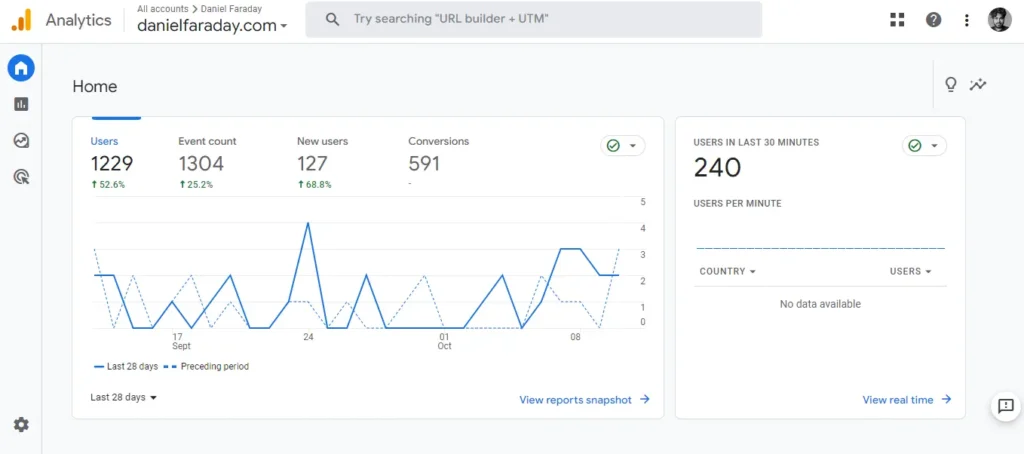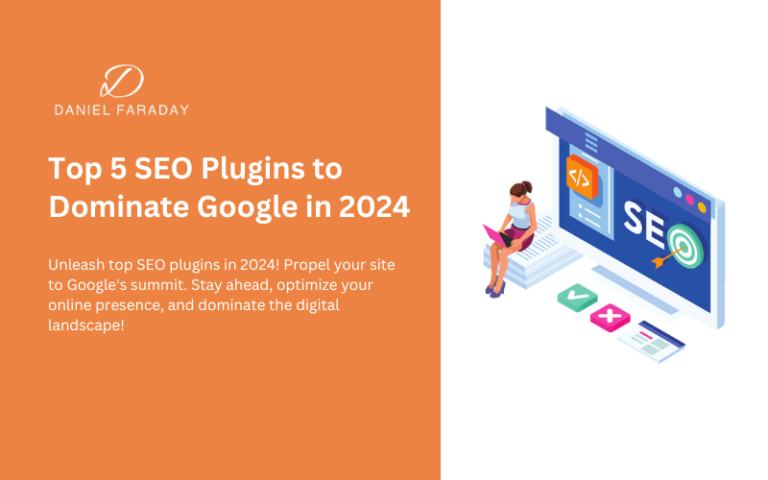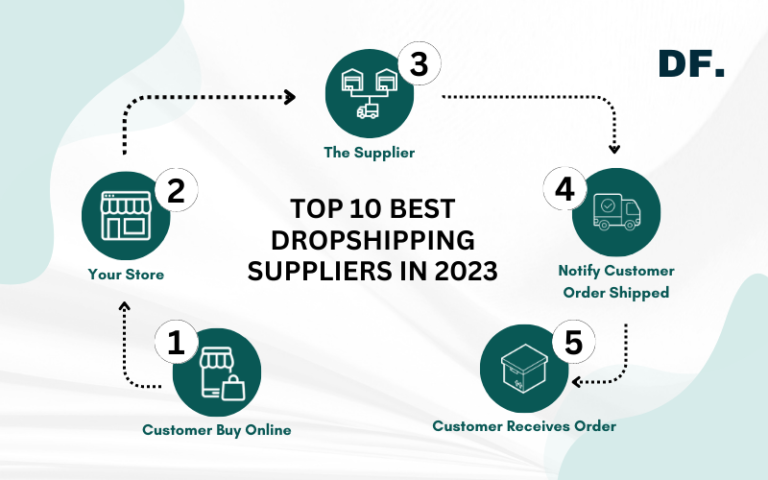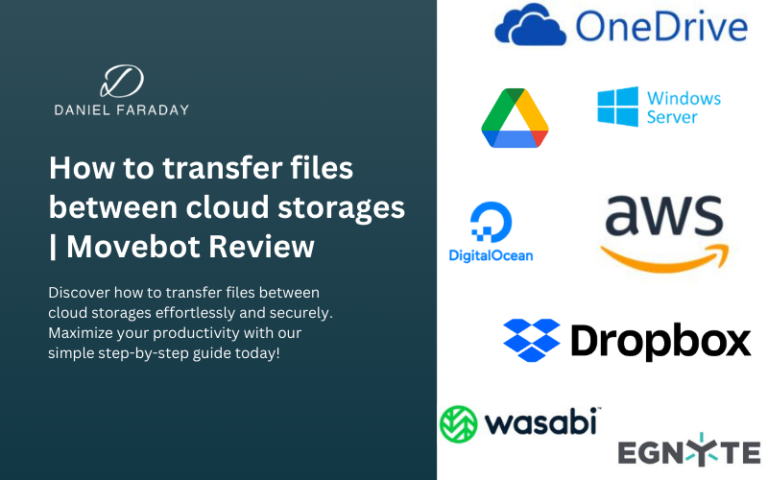10 Blogging Mistakes To Avoid In 2023

Blogging has come a long way over the years. In 2023, it continues to be a dynamic field with its own set of challenges and opportunities. To succeed in the ever-evolving blogosphere, it’s essential to stay updated on the latest trends and, perhaps more importantly, avoid common blogging mistakes that can hinder your progress.
Introduction
In the fast-paced world of blogging in 2023, it’s crucial to keep pace with changing dynamics. In this article, we’ll explore the top 10 blogging mistakes you should steer clear of this year to ensure your blog’s success.
1. Neglecting SEO Best Practices
SEO (Search Engine Optimization) is a set of techniques and strategies used to improve a website’s visibility in search engine results. It involves optimizing various aspects of a website, including content, keywords, meta tags, and backlinks, to rank higher in search engine rankings. The goal of SEO is to increase organic (non-paid) traffic to a website, making it easier for users to find relevant information and for businesses to reach their target audience online. SEO is an essential digital marketing tool that helps websites attract more visitors and achieve better online visibility.
Why SEO is crucial for blog success
Search Engine Optimization (SEO) remains the backbone of online visibility. Ignoring it can be detrimental to your blog’s performance. Here’s why SEO is crucial for the success of your blog:
1. Enhanced Visibility
One of the primary objectives of any blog is to be discovered by a relevant audience. SEO plays a pivotal role in enhancing your blog’s visibility on search engines like Google, Bing, and Yahoo. When you optimize your content for specific keywords and phrases that your target audience is searching for, your blog has a better chance of appearing in search engine results pages (SERPs). This increased visibility can drive organic traffic to your blog, helping you reach a broader and more engaged audience.
2. Quality Traffic Generation
SEO is not just about attracting any traffic; it’s about attracting the right kind of traffic. By optimizing your blog posts for relevant keywords, you’re more likely to attract visitors who are genuinely interested in the topics you cover. These visitors are more likely to stay on your blog, engage with your content, and convert into loyal readers or customers. In contrast, without SEO, you may receive random traffic that doesn’t align with your blog’s niche, resulting in high bounce rates and low engagement.
3. Credibility and Trust
Websites and blogs that appear at the top of search engine results are often perceived as more credible and trustworthy by users. When your blog consistently ranks well for relevant keywords, it builds a sense of authority in your niche. Readers are more likely to trust and value the information you provide, which can lead to increased brand recognition and a stronger online presence.
4. Competitive Edge
The blogging landscape is highly competitive. SEO can give you a competitive edge by allowing your blog to rank higher than your competitors in search results. This means that when users search for topics related to your niche, they are more likely to find your blog first. Being ahead of the competition in search rankings can lead to increased traffic, visibility, and ultimately, success in your blogging endeavors.
5. Long-Term Growth
While other forms of marketing and promotion may provide short-term spikes in traffic, SEO offers sustainable, long-term growth. Once you’ve optimized your blog content and earned high-quality backlinks, your rankings can remain relatively stable for extended periods. This means that your blog can continue to attract organic traffic and generate value long after you’ve published a post.
6. Analytics and Insights
SEO tools and analytics platforms provide valuable insights into your blog’s performance. By monitoring key metrics such as organic traffic, click-through rates, and keyword rankings, you can gain a deeper understanding of your audience’s preferences and behavior. This data allows you to fine-tune your content strategy, creating more of the content your audience loves and addressing any issues that may be hindering your blog’s success.
7. Adaptation to Algorithm Changes
Search engines frequently update their algorithms, which can impact how websites and blogs are ranked. Staying up-to-date with SEO best practices allows you to adapt to these changes and maintain or improve your blog’s visibility. Blogs that neglect SEO are more likely to experience drastic drops in traffic and struggle to recover.
Common SEO mistakes and solutions
| Mistakes | Solutions |
|---|---|
| 1. Ignoring keyword research: Failing to identify and target the right keywords can lead to poor search engine rankings. | Comprehensive Keyword Research: Begin by conducting thorough keyword research using tools like Google Keyword Planner, SEMrush, or Ahrefs. Identify high-traffic keywords relevant to your niche. Keyword Integration: Incorporate these keywords naturally into your existing blog posts. Ensure they fit contextually and enhance the overall quality of your content. Content Expansion: Consider expanding or revising blog posts to accommodate the newly identified keywords. This can breathe new life into older content. Monitoring and Adjustments: Continuously monitor the performance of your optimized content. If you notice improvements in rankings and organic traffic, consider similar optimization for other posts. |
| 2. Failing to optimize for mobile: In an era of mobile-first indexing, not optimizing for mobile can result in a loss of a significant audience. | Responsive Design: Implement a responsive web design that adapts seamlessly to various screen sizes, providing a consistent and user-friendly experience on both desktop and mobile devices. Mobile-Friendly Testing: Regularly use Google’s Mobile-Friendly Test tool to check your blog’s mobile optimization status. Address any issues it identifies promptly. Page Speed Optimization: Prioritize improving page loading times for mobile users. Optimize images, leverage browser caching, and reduce server response times. User Experience (UX): Pay attention to mobile user experience by ensuring that navigation, buttons, and fonts are optimized for smaller screens. |
| 3. Neglecting meta descriptions: A well-crafted meta description can significantly improve your click-through rates. | Craft Compelling Meta Descriptions: Go back to your blog posts and create engaging meta descriptions for each one. Ensure they accurately represent the content and incorporate relevant keywords. A/B Testing: Experiment with different meta descriptions for the same blog post and track which ones result in higher click-through rates (CTR). Use the winning formula for future posts. Utilize Actionable Language: Encourage clicks by including action-oriented language or questions in your meta descriptions. Make users curious and eager to explore your content. Match User Intent: Ensure that your meta descriptions align with the intent of users’ search queries. This increases the likelihood of attracting clicks from genuinely interested readers. |
2. Lack of Consistency in Content

Maintaining a consistent content strategy is vital for any successful online platform, whether it’s a blog, social media channel, or website. When content lacks consistency, it means there’s a lack of uniformity in the frequency, tone, quality, or themes of the posts. This inconsistency can have significant consequences for your audience and the overall impact of your platform.
Irregular posting can lead to a decline in readership and engagement, as your audience may lose interest or forget about your blog.
Common Content Consistency mistakes and solutions
| Mistakes | Solutions |
|---|---|
| 1. Not creating an editorial calendar | Creating an editorial calendar is essential for planning and organizing your content in advance. This helps ensure a consistent posting schedule and avoids last-minute content creation, improving content quality and audience engagement. Trello is one of the best tools for creating content plans. |
| 2. Not outsourcing or delegating tasks | Outsourcing or delegating tasks can help manage your content schedule more efficiently, especially if you have a busy workload. Consider hiring writers, designers, or social media managers to lighten your load and improve content quality. |
| 3. Neglecting to repurpose and update older content | Older content can still be valuable. Repurpose and update it to provide fresh insights, relevance, and improved SEO. This can include turning blog posts into infographics, podcasts, or videos to reach a broader audience. |
3. Ignoring Audience Engagement
“Ignoring audience engagement” refers to the act of neglecting or not paying sufficient attention to the interactions and feedback from your audience when creating and sharing content. In various content-related activities such as social media management, content creation, marketing, or public speaking, audience engagement plays a critical role.
Common mistakes in audience engagement and solutions
| Mistakes | Solutions |
|---|---|
| 1. Not responding to comments: Failing to engage with comments can make readers feel unheard. Also, if they ask for some information or more details about some topics, you can generate more content using their needs. | Respond Promptly: Make it a habit to respond promptly to comments on your blog posts. Acknowledge and thank readers for their input and questions. Engage in Discussions: Encourage discussions by asking follow-up questions or seeking readers’ opinions. Actively participate in the conversation to make readers feel valued. Address Queries: If readers request additional information or clarification on a topic, use their queries as inspiration for new content. Create follow-up blog posts or articles that address their needs and questions. |
| 2. Ignoring social media interactions: Social media is a valuable platform for connecting with your audience; ignoring it is a missed opportunity. | Regular Interaction: Actively engage with your audience on social media platforms. Respond to comments, messages, and mentions promptly to maintain an ongoing connection. Share Insights: Share insights, updates, and behind-the-scenes content on your social media accounts. This not only keeps your audience informed but also humanizes your brand. Run Polls and Surveys: Use social media to gather feedback and opinions from your audience. This helps tailor your content to their preferences and interests. |
| 3. Failing to personalize content: Tailoring your content to your audience’s interests and needs is essential for reader retention. | Audience Research: Invest time in understanding your audience’s interests, pain points, and preferences. Use tools like surveys and analytics to gather data. Create Personas: Develop audience personas to represent different segments of your readership. Tailor your content to address the specific needs and interests of these personas. Content Customization: Customize content based on audience segments. Create variations of content that resonate with different parts of your audience. Regular Feedback Loop: Continuously gather feedback through comments, surveys, and social media interactions. Use this feedback to adjust and refine your content strategy to better serve your audience. A/B Testing: Experiment with different content formats, headlines, and approaches to determine what resonates best with your audience. |
4. Neglecting Mobile Optimization
Neglecting Mobile Optimization refers to the practice of failing to adapt or optimize digital content, websites, applications, or online experiences for mobile devices. In an increasingly mobile-centric world, where smartphones and tablets play a central role in how people access information and interact with digital platforms, neglecting mobile optimization can have significant consequences for businesses, organizations, and individuals.
| Mistakes | Solutions |
|---|---|
| 1. Poor User Experience: When digital content or websites are not optimized for mobile devices, users may encounter a range of usability issues. These can include text that is too small to read, buttons that are difficult to tap accurately, slow loading times, and an overall frustrating browsing experience. Such issues can lead to high bounce rates and discourage visitors from engaging with the content. | Responsive Web Design: Implement a responsive web design that adapts your content and layout to different screen sizes. This ensures that text is readable, buttons are easy to tap, and the overall user experience is consistent and user-friendly across various mobile devices. Mobile-First Design: Start with designing for mobile devices first and then scale up to larger screens. This approach ensures that the mobile experience is prioritized and optimized from the beginning. Optimize Images and Multimedia: Compress images and multimedia content to reduce loading times on mobile devices. Prioritize the use of efficient image formats and lazy loading techniques. Usability Testing: Conduct usability testing on mobile devices to identify and address any issues users may encounter. Continuously gather feedback and make improvements based on user input. |
| 2. Negative Impact on SEO: Search engines like Google prioritize mobile-friendly websites in their search rankings. Neglecting mobile optimization can result in lower search engine visibility and reduced organic traffic, making it harder for users to discover your content or services. | Implement Mobile-First Indexing: Ensure that your website follows Google’s mobile-first indexing guidelines. This means that Google predominantly uses the mobile version of the content for ranking and indexing, improving your search engine visibility. Mobile SEO Best Practices: Implement mobile SEO best practices, such as optimizing meta tags, using descriptive mobile-friendly URLs, and ensuring that your mobile content is easily crawlable by search engines. Page Speed Optimization: Improve page loading speed on mobile devices as it is a significant ranking factor. Use tools like Google PageSpeed Insights to identify and address speed-related issues. |
| 3. Lost Revenue Opportunities: For businesses, neglecting mobile optimization can translate into missed revenue opportunities. E-commerce websites, for instance, may lose potential customers if the mobile shopping experience is subpar. Consumers are more likely to abandon their carts and look elsewhere if they encounter difficulties while trying to make a purchase on a mobile device. | Optimize Checkout Process: Streamline the mobile shopping experience by simplifying the checkout process. Reduce the number of steps and make it easy for users to complete purchases on mobile devices. Responsive Product Pages: Ensure that product pages are mobile-responsive and provide high-quality images and detailed product descriptions. Implement mobile-friendly product filters and sorting options. Mobile Payment Options: Offer a variety of mobile payment options, including popular mobile wallets, to facilitate quick and secure payments on mobile devices. |
| 4. Brand Reputation: A suboptimal mobile experience can harm a brand’s reputation. Users may associate a poorly optimized website or application with unprofessionalism, leading to a negative perception of the brand as a whole. | Consistent Branding: Maintain a consistent brand identity and user experience across all platforms, including mobile. Ensure that your brand elements are correctly displayed and align with your overall brand image. User-Centered Design: Prioritize user-centered design principles when optimizing for mobile to demonstrate a commitment to providing a positive user experience. Responsive Customer Support: Provide responsive and mobile-friendly customer support options to address user concerns and issues promptly. |
| 5. Accessibility Concerns: Neglecting mobile optimization can also affect accessibility for individuals with disabilities. Mobile screen readers and assistive technologies rely on well-structured and optimized content to provide an inclusive experience for all users. Failing to meet these accessibility standards can result in legal and ethical issues. | Accessibility Testing: Conduct thorough accessibility testing on your mobile content and applications. Ensure that they adhere to WCAG (Web Content Accessibility Guidelines) standards and are compatible with assistive technologies. Alternative Text: Use descriptive alt text for images and provide text equivalents for multimedia content to assist users with disabilities. Accessible Navigation: Implement accessible navigation menus and ensure that mobile screen readers can easily interpret and navigate your content. |
| 6. Competitive Disadvantage: In today’s competitive digital landscape, businesses that prioritize mobile optimization gain a competitive edge. Those who neglect it risk falling behind their competitors who offer superior mobile experiences to their audience. | Monitor Competitors: Keep a close eye on your competitors and their mobile optimization efforts. Identify areas where they excel and use these insights to improve your own mobile experience. Continuous Improvement: Make mobile optimization an ongoing process. Regularly update and enhance your mobile offerings to stay ahead of the competition. User Feedback: Encourage user feedback and reviews on your mobile experience. Use this feedback to identify areas for improvement and prioritize user satisfaction. |
5. Overlooking Email Marketing
Email marketing is a valuable and often underestimated tool for bloggers. When bloggers overlook email marketing, they miss a significant opportunity to connect with their audience, build stronger relationships, and drive the success of their blogs.
| Mistakes | Solutions |
|---|---|
| 1. Not building an email list: Start building your email list early to cultivate a dedicated readership. | Create Sign-Up Forms: Place sign-up forms prominently on your blog to encourage visitors to subscribe to your newsletter. Use engaging call-to-action buttons and clear value propositions to entice them. Offer Incentives: Provide incentives for subscribing, such as exclusive content, e-books, or discounts. These incentives can motivate visitors to join your email list. Promote Your Newsletter: Promote your newsletter on social media, within your blog posts, and through other channels to increase visibility and attract more subscribers. Consistent Content: Ensure that you deliver valuable and consistent content to your email subscribers to maintain their interest and trust. |
| 2. Sending irrelevant content: Bombarding your subscribers with irrelevant content can lead to unsubscribes. | Segment Your Audience: Divide your email list into segments based on subscriber interests, demographics, or behaviors. This allows you to send targeted content to each group. Preference Center: Create a preference center where subscribers can choose the types of content they want to receive. This ensures they only get content relevant to their interests. Use Analytics: Analyze email engagement data to understand what types of content resonate most with your audience. Adjust your content strategy accordingly. Regular Surveys: Periodically ask your subscribers for feedback and preferences to ensure you’re meeting their expectations. |
| 3. Neglecting email segmentation: Personalize your email campaigns by segmenting your audience based on their interests and behaviors. | Segmentation Strategy: Develop a clear segmentation strategy based on subscriber data, such as interests, purchase history, location, or engagement levels. Automate Segmentation: Use email marketing tools to automate the segmentation process. Create dynamic email lists that update automatically as subscribers meet specific criteria. Tailored Content: Craft email content that speaks directly to each segment’s interests and needs. Use personalized subject lines and content suggestions to enhance relevance. Testing and Optimization: Continuously test and optimize your segmented email campaigns to improve open rates, click-through rates, and conversion rates. |
6. Ignoring Analytics and Data

In the digital age, analytics and data play a pivotal role in the success of any online venture, including blogging. Yet, the mistake of ignoring analytics and data is a common oversight among bloggers.
| Mistakes | Solutions |
|---|---|
| 1. Not setting up analytics tools: You can’t improve what you don’t measure. Implement analytics tools to track your blog’s performance. | Choose the Right Tools: Select suitable analytics tools such as Google Analytics, Adobe Analytics, or WordPress plugins like MonsterInsights. Ensure they align with your specific blogging needs. Installation: Follow the provided instructions to install and set up the chosen analytics tool on your blog. Ensure that it’s tracking all relevant data, including traffic sources, user behavior, and conversion goals. Regular Monitoring: Make it a habit to regularly review your analytics dashboard to gain insights into your blog’s performance and audience behavior. |
| 2. Misinterpreting data: Incorrectly analyzing data can lead to misguided decisions. | Education: Invest time in understanding the metrics and data points provided by your analytics tool. Seek online courses, tutorials, or documentation to enhance your data analysis skills. Contextual Analysis: Consider the context behind the data. Analyze trends over time and compare data across different periods to identify patterns and anomalies accurately. Consultation: If you’re uncertain about the interpretation of specific data points, consult with experienced bloggers or data analysts who can provide guidance and insights. |
| 3. Failing to act on insights: Identify trends and take actionable steps based on data. | Regular Review: Schedule regular data review sessions to identify trends, areas for improvement, or opportunities. Use these insights to inform your content strategy and overall blog optimization. Set Goals: Define specific goals and objectives based on your data analysis. For example, if you notice a decline in traffic from a particular source, set a goal to improve it by implementing relevant strategies. Experimentation: Use data as a guide for conducting experiments or A/B tests. Test different approaches based on your insights, whether it’s content types, posting schedules, or audience targeting. Iterative Approach: Understand that data-driven decisions often require ongoing adjustments. Continuously monitor the effects of changes and be prepared to iterate and refine your strategies as needed. |
7. Neglecting Social Media Promotion
In the digital age, analytics and data play a pivotal role in the success of any online venture, including blogging. Yet, the mistake of ignoring analytics and data is a common oversight among bloggers.
| Mistakes | Solutions |
|---|---|
| 1. Inconsistent posting on social platforms: Regular posting on social media keeps your audience engaged. | Create a Content Calendar: Plan your social media content in advance using a content calendar. This ensures a steady stream of posts and helps maintain consistency. Automate Posts: Use social media management tools like Buffer or Hootsuite to schedule posts in advance. This automation can save time and ensure regular posting even during busy periods. Engage Your Audience: Encourage engagement with your social media posts by asking questions, running polls, or sharing user-generated content. Active engagement can motivate you to maintain consistency. |
| 2. Over-promotion without engagement: Don’t just promote; interact with your audience on social media. | Follow the 80/20 Rule: Aim for a balance where only 20% of your social media content is promotional, while the remaining 80% focuses on providing value, sharing insights, or engaging with your audience. Respond Promptly: Actively monitor comments, mentions, and messages on your social platforms. Respond promptly, acknowledge feedback, and engage in meaningful conversations. Personalize Interactions: Make interactions genuine by addressing users by their names and taking a personalized approach in your responses. Show that you value their contributions. Share User-Generated Content: Share content created by your followers or customers. This not only promotes engagement but also strengthens your community and builds trust. |
| 3. Ignoring emerging platforms: New platforms can provide fresh opportunities; don’t dismiss them too quickly. | Stay Informed: Keep an eye on emerging social media platforms and trends in the digital landscape. Stay informed about platforms gaining popularity in your niche or target demographic. Experiment: Don’t hesitate to experiment with new platforms or features. Test the waters, create a presence, and assess their potential for reaching and engaging your audience. Diversify Your Presence: Maintain a presence on established platforms, but be open to diversifying your social media portfolio. Different platforms may appeal to different segments of your audience. Measure and Adjust: Use analytics to evaluate the effectiveness of your presence on emerging platforms. If a platform doesn’t yield results, adapt your strategy or consider reallocating resources to more promising channels. |
8. Failing to Monetize Effectively
Monetizing a blog is often a significant goal for bloggers, but doing so ineffectively can hinder the potential for sustainable income and growth. Whether your objective is to generate supplementary income or turn your blog into a full-time career, monetizing effectively is essential.
| Mistakes | Solution |
|---|---|
| 1. Overloading with ads: Excessive ads can deter readers and harm user experience. | Strategic Placement: Carefully select ad placements that do not disrupt the reading experience. Avoid covering essential content or overwhelming your pages with ads. Balance Ads: Limit the number of ads on your blog to strike a balance between monetization and user experience. Prioritize user comfort and engagement. Use Ad Networks: Work with reputable ad networks that offer control over ad placements and ad types. This allows you to tailor ads to your audience without excessive intrusion. User Feedback: Encourage user feedback about ad placement and intrusiveness. Use this input to make adjustments that enhance the user experience. |
| 2. Not diversifying income sources: Relying solely on one income stream can be risky. | Affiliate Marketing: Promote relevant products or services through affiliate marketing programs. Diversify your affiliate partnerships to reach a wider audience. Sponsorships: Seek partnerships with brands or businesses for sponsored content, reviews, or collaborations. Premium Content: Develop premium content, such as e-books, courses, or membership sites, to offer exclusive value to your audience. Consulting or Coaching: Leverage your expertise to offer consulting, coaching, or workshops in your niche. Sell Merchandise: Consider selling merchandise related to your blog’s brand, including physical products or digital downloads. Email Marketing: Monetize your email list through targeted promotions and exclusive offers. |
| 3. Sacrificing content quality for profit: Prioritize quality content over aggressive monetization. | Content-First Approach: Always prioritize the creation of high-quality, informative, and engaging content that resonates with your audience. Quality content attracts and retains readers. Audience Engagement: Maintain a strong focus on building and nurturing your audience. Engaged readers are more likely to support your blog’s monetization efforts. Content Calendars: Create content calendars that balance monetization strategies with content creation. Plan ad placements and promotions strategically. User Feedback: Monitor user feedback and engagement metrics to ensure that monetization efforts do not detract from the overall user experience. Long-Term Perspective: Recognize that quality content and a loyal audience are the foundation for sustainable income. Short-term profit gains should not compromise your blog’s long-term success. |
9. Underestimating the Importance of Quality Content
In the ever-evolving landscape of digital content, underestimating the paramount role of high-quality content is a common oversight among bloggers. Quality content serves as the backbone of a successful blog, and recognizing its significance is vital for bloggers’ growth and impact.
| Mistakes | Solutions |
|---|---|
| 1. Quantity over quality: Focus on producing high-quality content rather than churning out posts. | Content Calendar: Create a content calendar that allows you to plan and pace your content effectively. Allocate sufficient time for research, writing, and editing. Editorial Guidelines: Establish clear editorial guidelines that emphasize quality, including word count, depth of research, and content structure. Content Audit: Periodically review and audit your existing content. Identify posts that may lack quality and consider revising or removing them. Reader Feedback: Encourage feedback from your audience and pay attention to their preferences. Use their input to align your content strategy with their interests. |
| 2. Plagiarism and duplicate content: Originality is key; avoid duplicate content and plagiarism. | Proper Attribution: When using external sources, ensure that you properly attribute the content. Provide citations and links to the original source to avoid plagiarism. Original Research: Conduct original research and create content that offers a unique perspective or insights on a topic. Original content sets your blog apart. Plagiarism Checkers: Use plagiarism detection tools to scan your content and ensure it’s free from unintentional plagiarism. Content Reuse: If you must reuse content, ensure that it’s properly cited and adds value to the overall quality of your blog. |
| 3. Poor editing and proofreading: Typos and grammatical errors can detract from your blog’s professionalism. | Dedicated Editing: Set aside dedicated time for editing and proofreading. This step is as important as content creation itself. Professional Editors: If possible, work with professional editors or proofreaders. They can provide an objective and expert perspective on your content. Peer Review: Seek input from peers or fellow bloggers. Fresh eyes can catch errors that you might have missed. Grammar and Spelling Tools: Use grammar and spelling-checking tools to catch typos and grammatical errors. Consistency: Create a style guide for your blog, including guidelines for formatting, tone, and writing style. This consistency adds professionalism to your content. |
10. Not Updating Your Old Blog Posts
In the dynamic world of blogging, overlooking the importance of regularly updating old blog posts is a common but significant mistake. Bloggers who fail to revisit and refresh their existing content are missing out on a valuable strategy for enhancing their blog’s performance and maintaining its relevance.
| Mistakes | Solutions |
|---|---|
| 1. Stale and outdated information: Failing to update old posts means your readers may encounter outdated or incorrect information, which can harm your credibility. | Content Calendar: Incorporate regular content audits into your content calendar. Allocate time to review and update old posts. Fact-Checking: Before updating, fact-check the information in your older posts. Ensure that all statistics, data, and references are accurate and up-to-date. Relevance Assessment: Evaluate the relevance of each older post to your current niche or target audience. Consider whether the post still aligns with your blog’s goals. Transparency: When updating a post, be transparent about the changes. Inform your readers of the updates and the reasons behind them. |
| 2. Missed SEO opportunities: Search engines favor fresh content. Not updating your older posts can lead to a decline in search engine rankings over time. | Keyword Research: Perform keyword research to identify relevant and trending keywords related to the topic of your older posts. Update the content to incorporate these keywords naturally. Fresh Content: Add new information, examples, or case studies to refresh the content. This not only enhances the user experience but also signals to search engines that the content is current. Meta Information: Review and update meta titles and descriptions to make them more appealing and aligned with current SEO best practices. Internal Linking: Include internal links to newer relevant posts. This not only aids in SEO but also encourages readers to explore your more recent content. |
| 3. Unexplored monetization: New monetization opportunities may arise, and older posts can benefit from these if you revisit and update them. | Affiliate Opportunities: Look for opportunities to add relevant affiliate links to older posts. Ensure that they naturally fit within the content and provide value to the reader. Promote Premium Content: If you’ve created premium content such as e-books or courses since the original post, update the old content to promote these offerings. Display Ads: Consider adding or optimizing display advertisements within older posts. Ensure that the ad placement does not compromise the user experience. Sponsored Content: Explore opportunities for sponsored content within updated posts. Collaborate with brands or businesses that align with the post’s topic. |
Key Takeaways
In the ever-evolving world of blogging, avoiding these common mistakes can significantly enhance your chances of success in 2023. Stay on top of SEO, engage with your audience, embrace mobile optimization, utilize email marketing, harness the power of data, promote effectively on social media, monetize wisely, and always prioritize the quality of your content.
FAQs
What’s the most common mistake bloggers make in 2023?
One of the most common mistakes bloggers make in 2023 is neglecting mobile optimization. With the increasing use of mobile devices, it’s crucial to ensure that your blog is mobile-friendly to cater to a wider audience.
How often should I post on my blog for consistency?
The ideal posting frequency may vary, but consistency is key. It’s better to maintain a steady schedule, whether it’s once a week, biweekly, or monthly, rather than sporadic posting.
What are some emerging social media platforms to consider for promotion?
Keep an eye on emerging platforms like TikTok, Clubhouse, and any new platforms that gain popularity. Experiment with these platforms to reach new audiences.
How can I effectively monetize my blog without overwhelming it with ads?
Diversify your income sources by exploring affiliate marketing, sponsored content, selling digital products or services, and offering premium memberships or courses. This reduces your reliance on display ads.
How do I ensure my content is of high quality?
To ensure high-quality content, prioritize originality, invest time in thorough research, use proper formatting and structure, and edit and proofread your posts meticulously before publishing.






